How to create vintage art from He-Man 3D scans - danieltrum1952
Creating vintage fine art can personify achieved in many ways. Merely have you tried scanning old toys and house painting terminated them to wee unique digital nontextual matter that recalls the 1980s flower of the Masters Of The Universe? Combining his love of customising action mechanism figures and kit-bashing 3D models for concepts artist Sight Coleman will show you how to do just this.
Over the past year Coleman has developed an extensive subroutine library of 3D scanned assets, including character heads, armor and weapons to composite scenes of his favourite characters from the world of He-Man, Skeletor and the Masters Of The Universe.
The vintage toy chest artistry, 1980s iconic movie bill sticker art and Forthright Frazetta are strong influences on the type of finish Coleman is aiming for in his unhappy imagery. Therein workshop Coleman will explain his appendage, from how he 3D-scans and prepares the models, before importing them into ZBrush. He'll show you how to consumption basic ZBrush navigation tools much As Gizmo, Transpose, Subtools and Brushes to build a part, combining a model he previously posed and exported in Daz 3D.
The shop volition continue on the lighting and rendering of different passes of the fashion mode in KeyShot. These KeyShot renders will then represent combined in Photoshop to figure an image mixed with his possess hand-pied backgrounds and textures and then given a terminal paint-over in Corel Puma to let that 1980s-style oil-particolored goal.
Ascertain the video instructor below and then follow along with Coleman in his own wrangle…
01. Preparing for the 3D scans
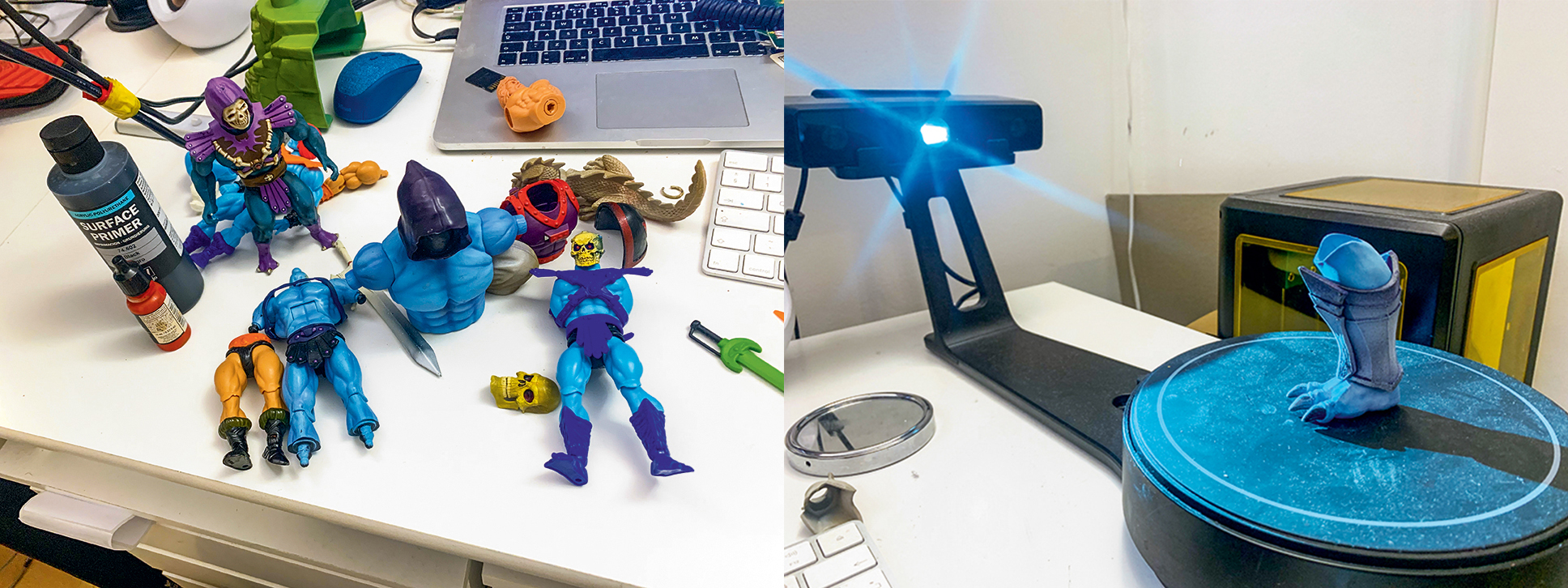
(Image: © Ken Coleman)
I set a image in Daz 3D – I have a favourite for my Masters of the Universe projects called Dark Guard. I combine him with some animal and beast morphs to get the unguiculate hands and feet. I then export this as an object lodge to be used in ZBrush. I scan the various parts of the figures with my EinScan-SE 3D scanner. The larger-scale models are large for detail on the face, but the armour parts on the seven-inch scale figures are perfect for blocking in 3D.
02. Building the ZBrush digit
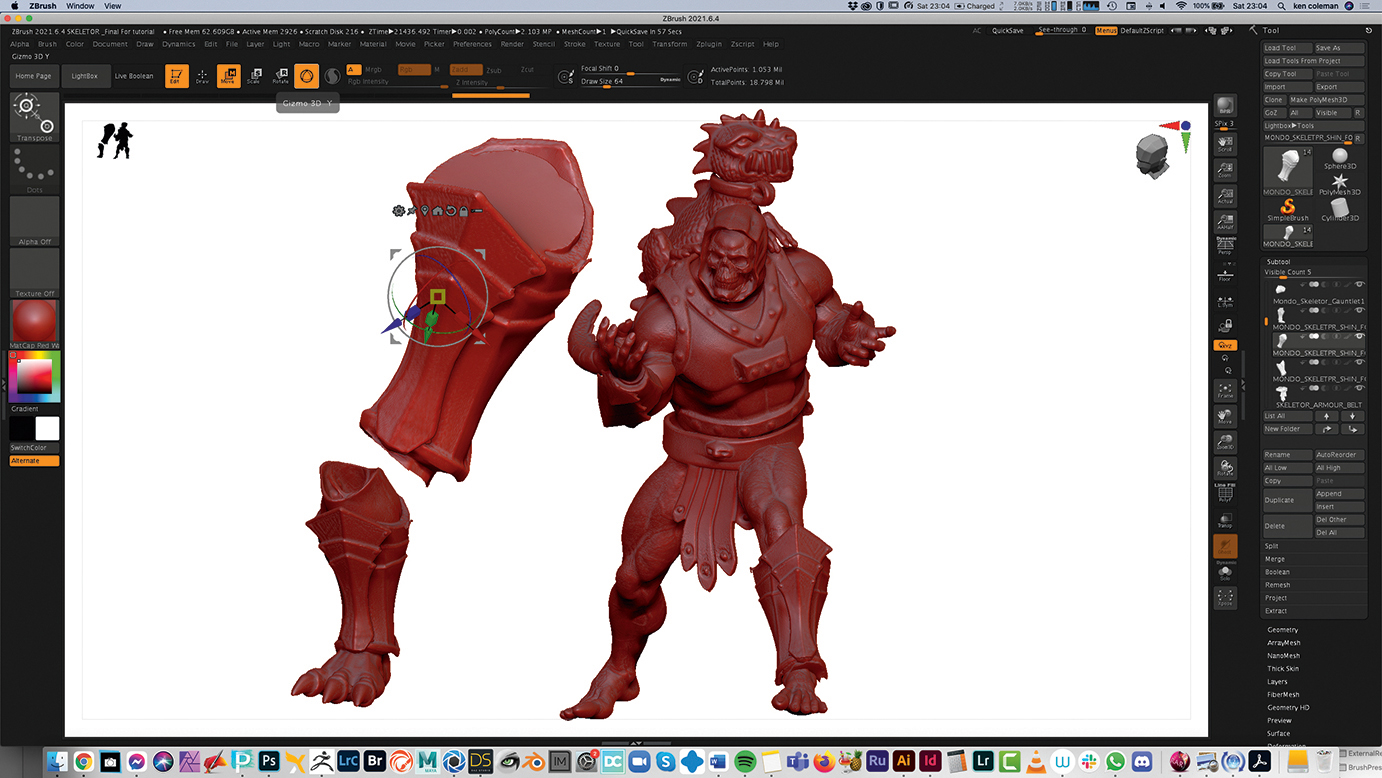
(Image: © Ken Coleman)
I importation the Daz 3D mannikin into ZBrush and insistence T to make sure the model is functioning in the 3D space. Using the Subtool palette happening the right of the screen I duplicate the figure and press Import. I select the 3D scanned elements by repeating this cognitive process. Every meter I duplicate a Subtool and press Import, the new model part will replace the previous unmatched in the composition. I have to cost careful to ordered series the 3D scanned parts using the Gizmo and Transplant tools – not entirely scanned parts are correct when strange.
03. Lighting in KeyShot

(Figure of speech: © Ken Coleman)
To import the mock up from ZBrush to KeyShot, I attend the Render menu, select Extraneous Render, turn on KeyShot and so entreat the BPR button. This wish import the model directly to KeyShot. Once the model appears in KeyShot I attend Edit>Add Geometry>Sphere. I can then make a light source. To make this, I double-click the sphere modelling in the scene window in the top side right of the screen. When I flick the unclouded medulla symbol that opens beneath IT, I potty alteration the material to Arena Light>Set to Watts.
04. Creating materials in KeyShot
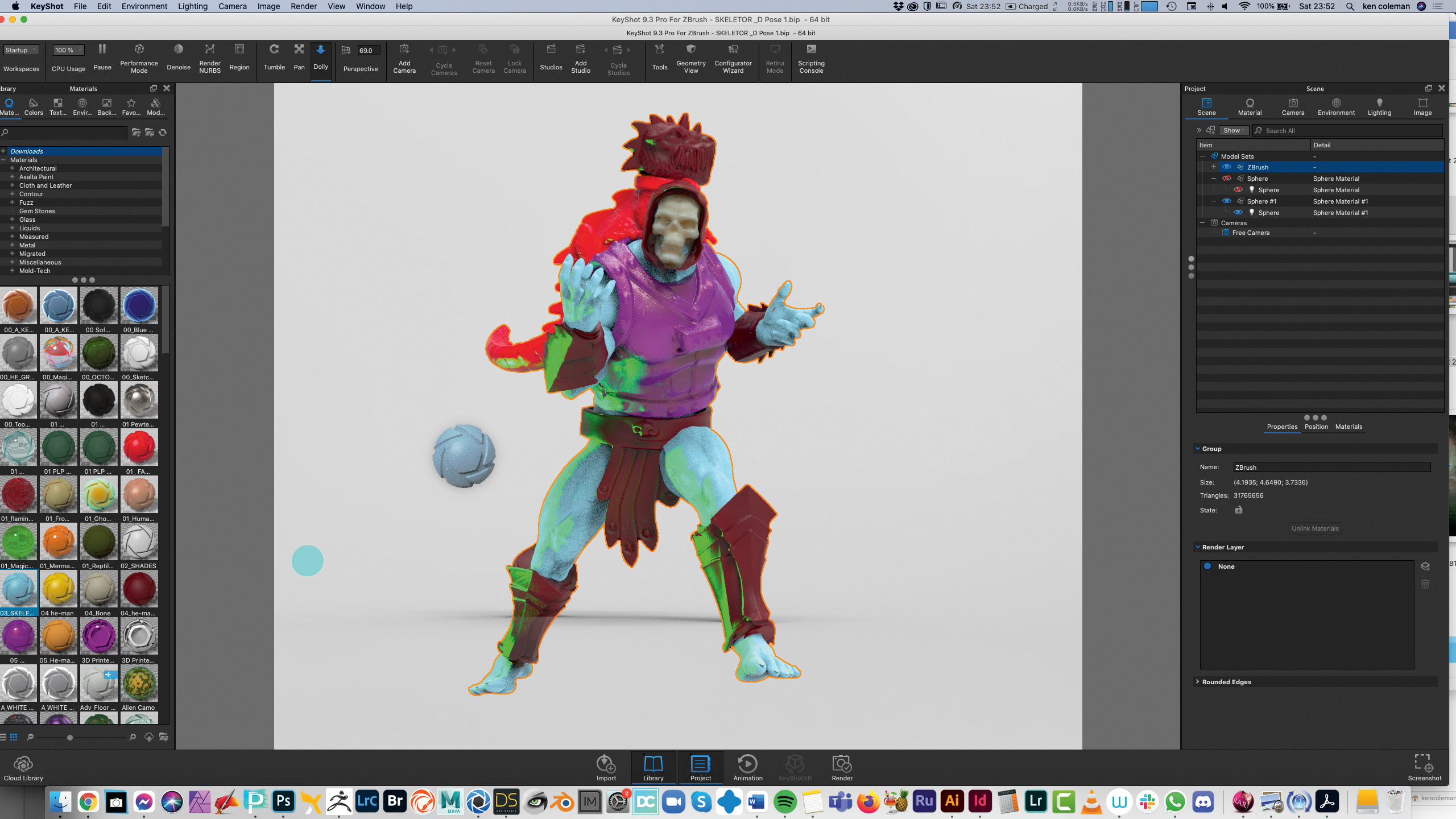
(Pictur: © Sight Coleman)
KeyShot enables you to drag and drop a reincarnate on to any of the part Subtool elements to colour information technology. You bathroom also apply a material to the whole model by effortful the material ended to the Scene part and dropping it happening to the ZBrush label, which is the model and all its elements. If you do this you must press the Lock chamber release in the bottom window double and Press Unlink Materials to add different materials one by one.
05. Listing your KeyShot materials
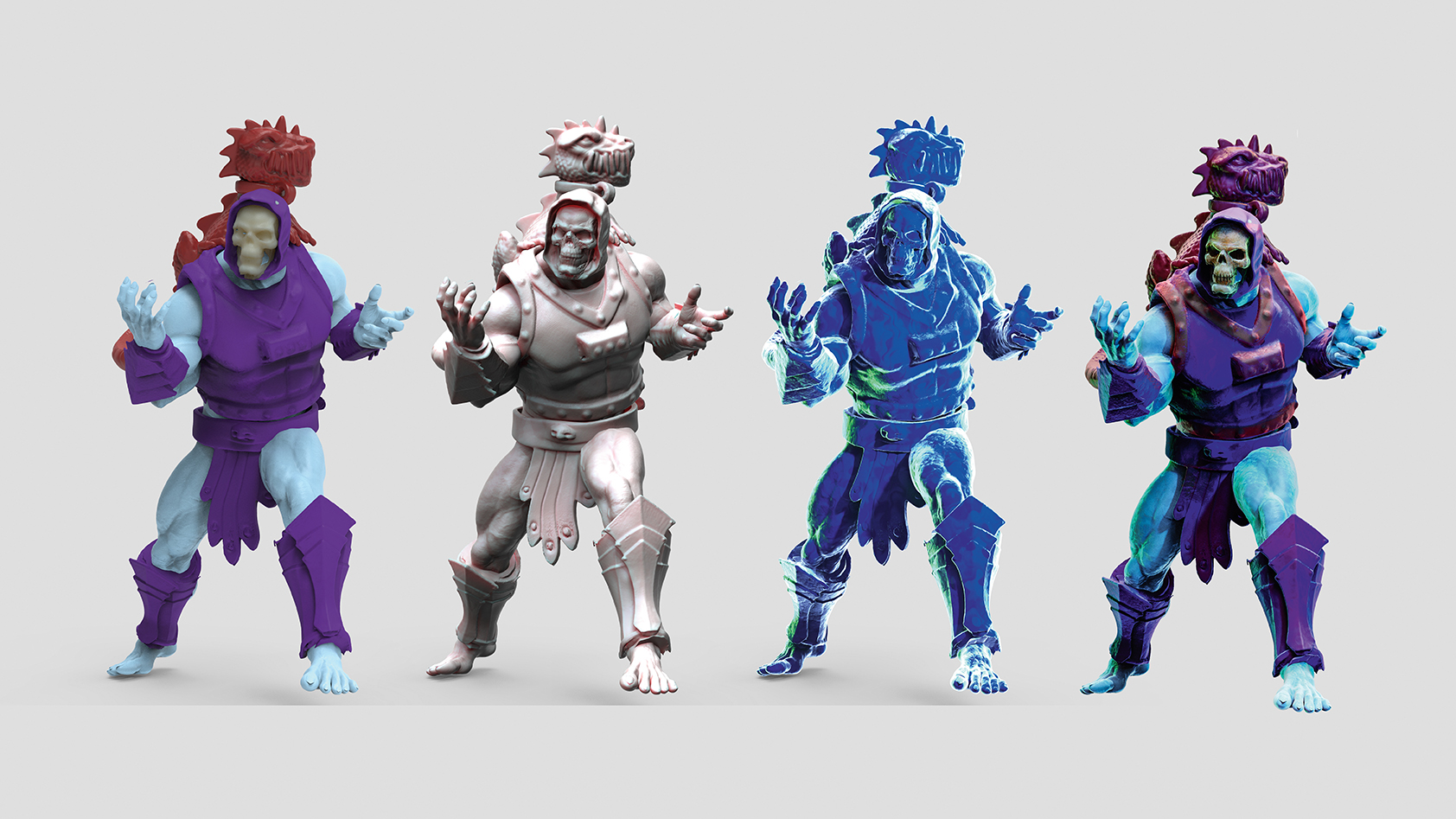
(Image: © Ken Coleman)
I use the same materials aside from the character colours to accomplish the right look and translucency of light. Skeletor's face is bone, his skin is electrical Amytal and I use metal-looking and not-metallic colors for his armour. The other KeyShot materials are GOZ Human Skin and Blue WHITE RIM Lighter-than-air. I export for each one render as a hi-res PSD file with the clown option turned on to make a silhouette to use for selections in Photoshop.
06. Combining the layers
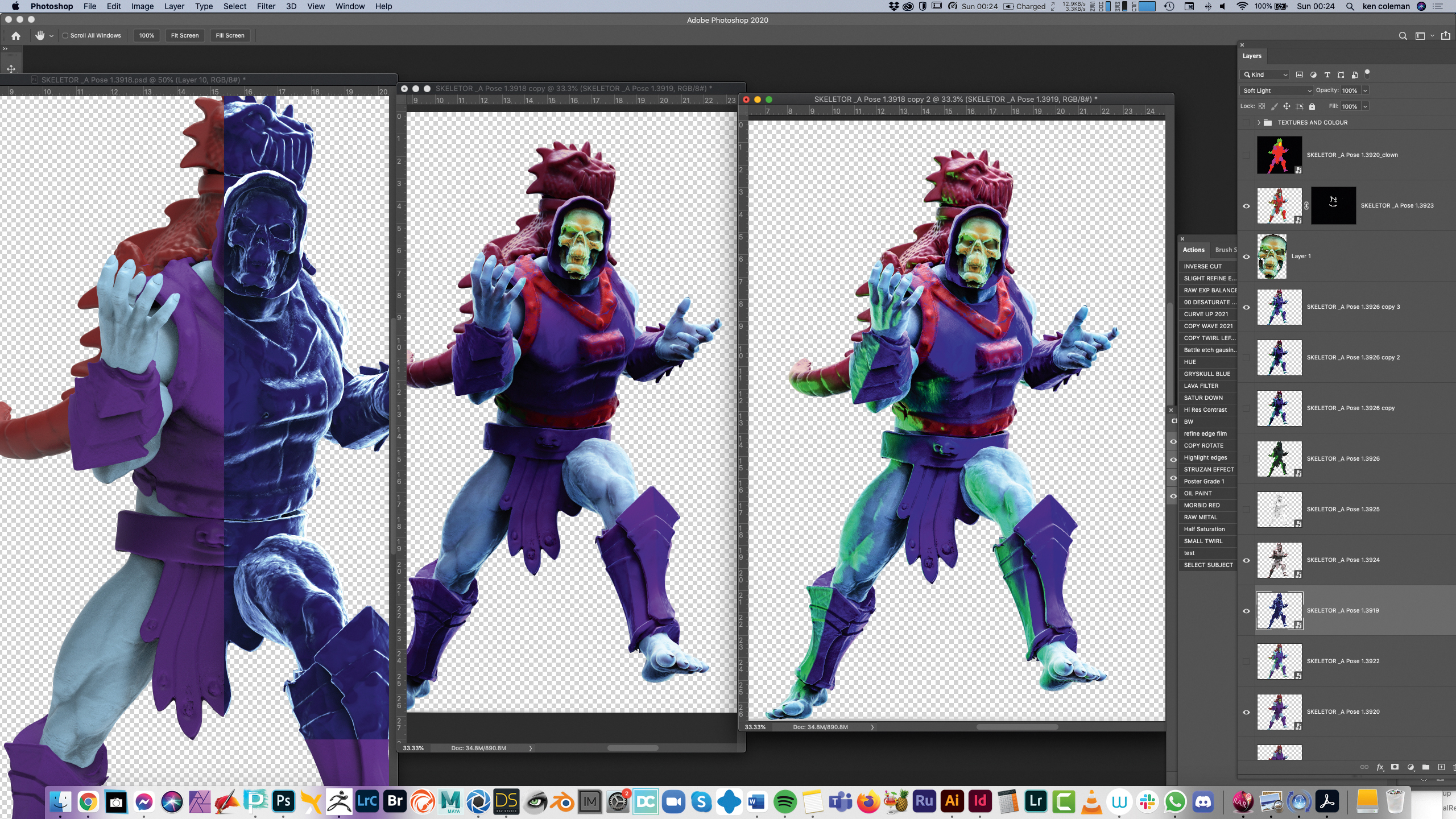
(Image: © Ken Coleman)
Once my renders have completed I open the basic colorize one in Photoshop. Next, I drag the other layers into this file as Smart Layers. I set the GOZ layer and Blue Rim layer to Spongy Light Blend mode. Once I'm well-chosen with the level of translucency of complete my layers, I select them all, copy them and conflate them (the shortcuts are Ctrl/Cmd+J followed aside Ctrl/Cmd+E). I duplicate this layer one more time for the next phase.
07. Using Camera Overt in Photoshop
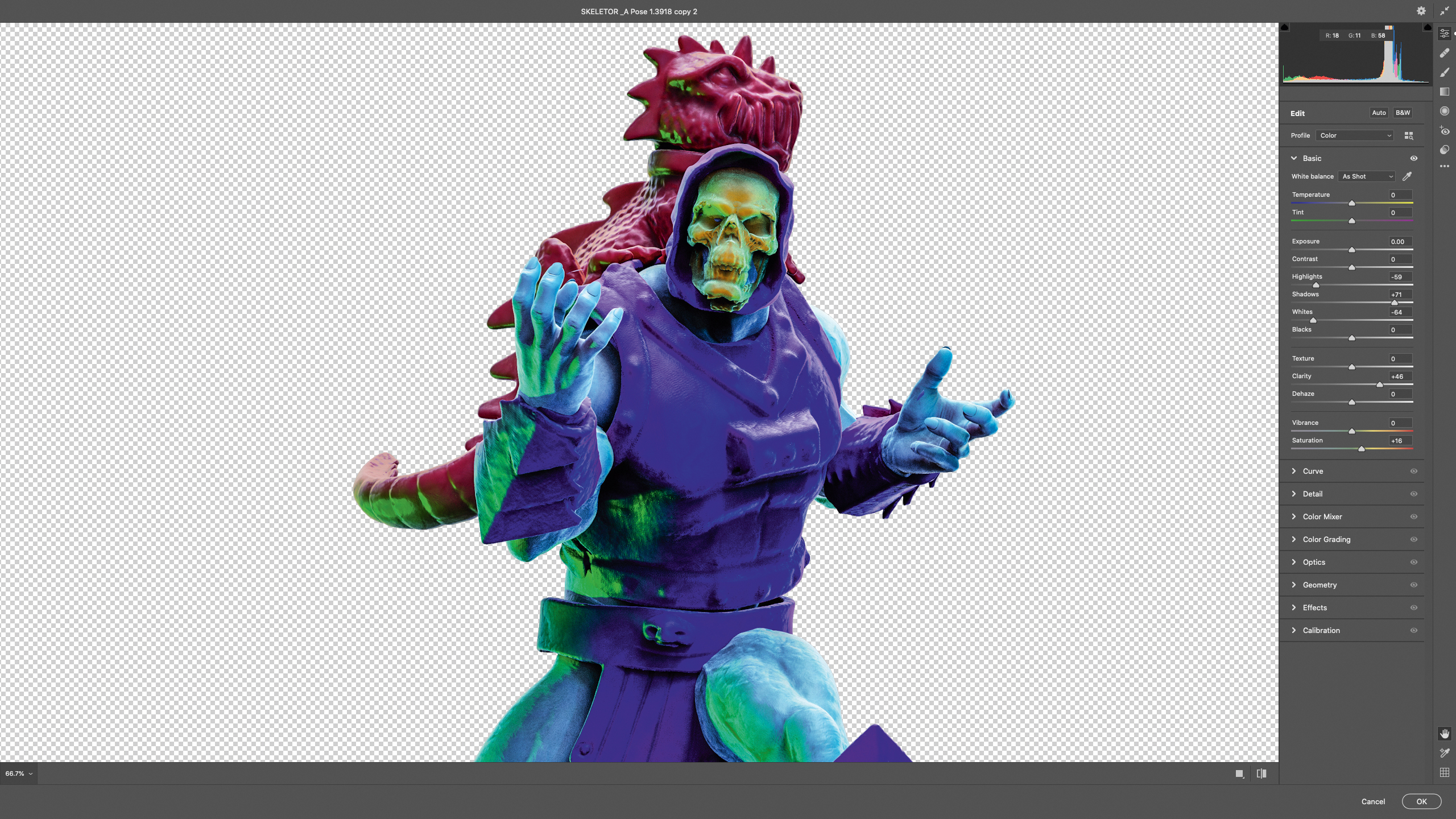
(Image: © Ken Coleman)
Photoshop's Camera Bare-ass trickle is a powerful tool for adding a grade of punch to your illustrations. Superior the top-most merged layer copy and press Filter>Camera Raw Filter. You can see from the image how I've placed my sliders. My approach is always Shadows up, Limpidity up, Intensity up slimly and Highlights and Whites down. This extra fine-tune really gives a burst of colour and detail to your 3D try.
08. Adding texture and point
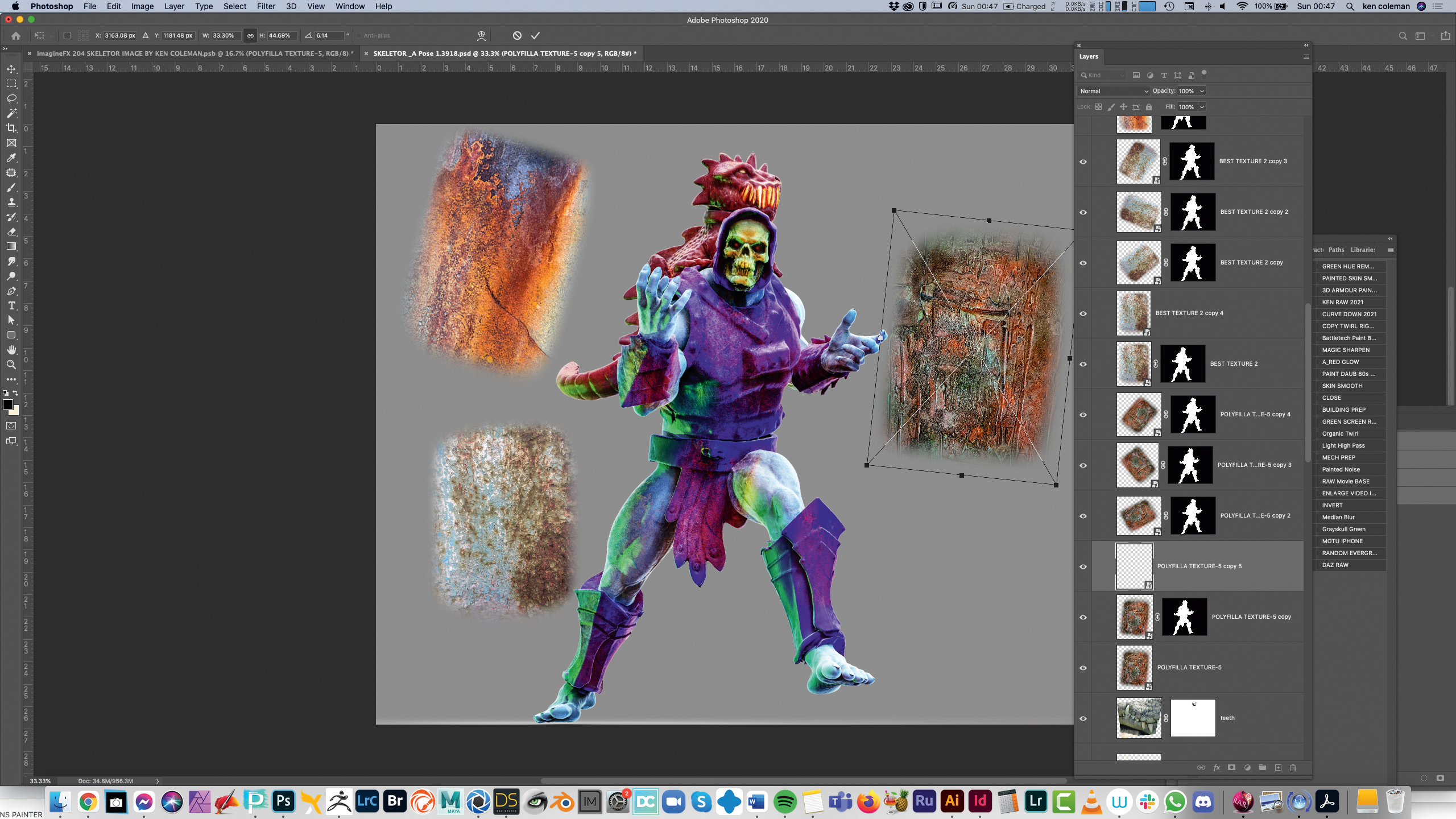
(Image: © Ken Coleman)
I find that using photos of rusty surfaces and tarnished concrete are fantastic
for creating particular and depth in images. The concrete and porous stone is my favourite textures for the skin. I drag these elements on tip of the figure and I mask them using the silhouette from the clown layer that I exported from KeyShot. My varicolored Polyfilla layer is especially effective and fun for creating a grind away-the likes of outcome on Skeletor's face.
09. Composing the layout
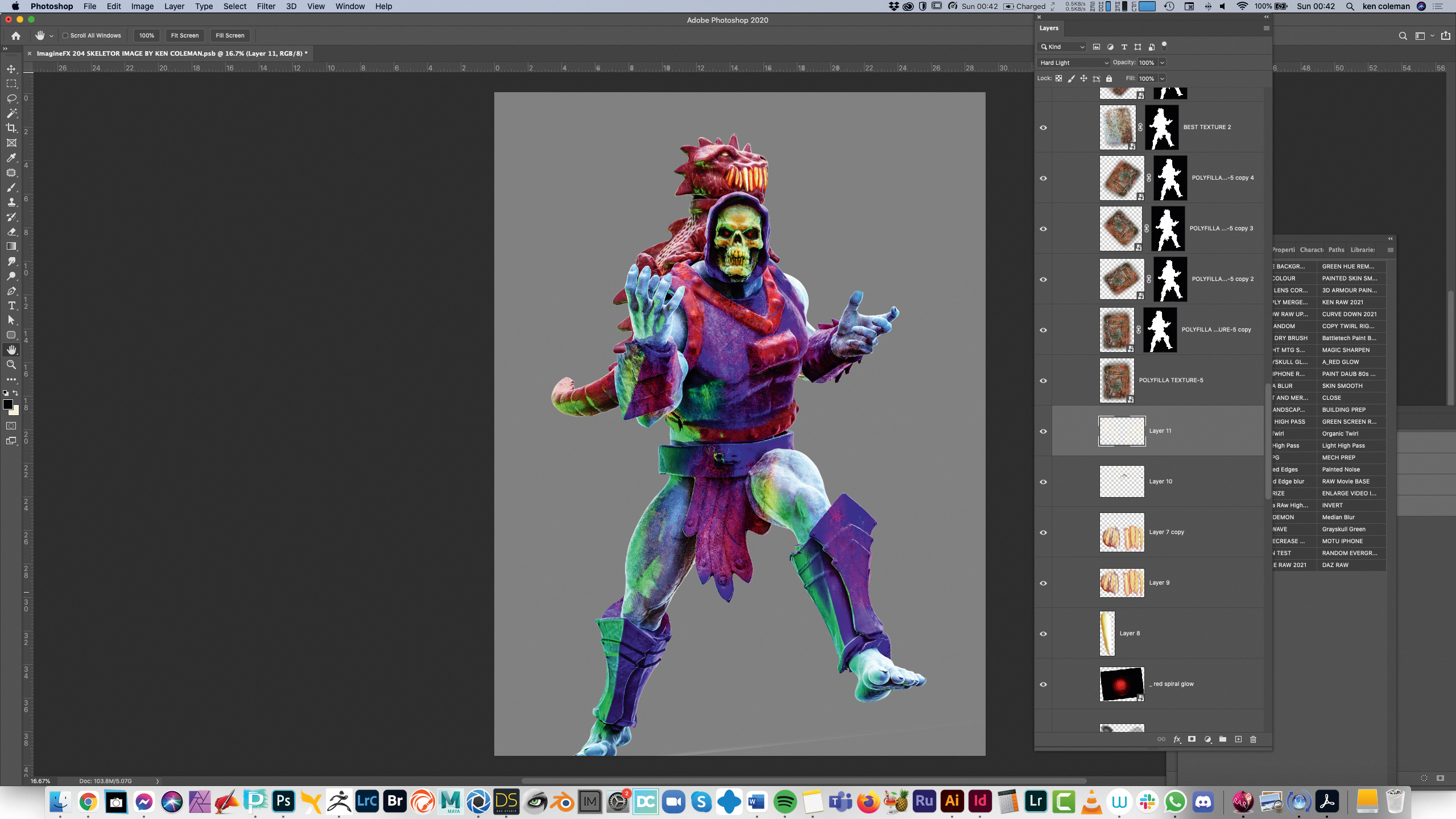
(Image: © Ken Coleman)
Now that I'm happy with the overall figure, I group all the elements. I create a new file the corresponding size as an ImagineFX page at 22x30cm but at 450dpi for higher resolution. Most of my work is at to the lowest degree A2 in size at 300dpi. I today drag the figure group crossways and initiate to place background elements and particles to build a scene. I have got folders of hand-painted backdrops, particles and objects to help build scenes quickly.
10. Pass-painting the backgrounds
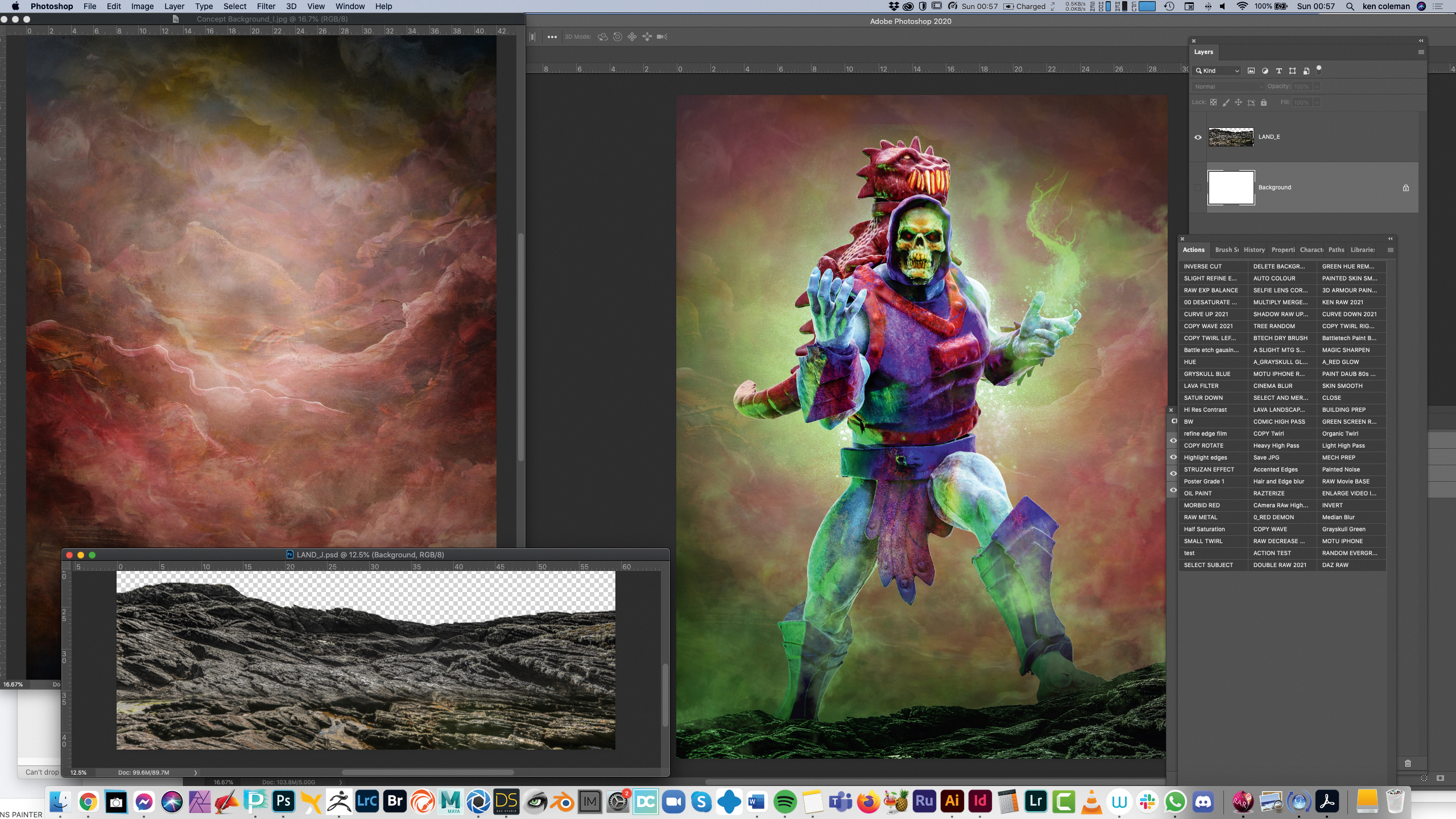
(Image: © Ken Coleman)
I add stock photos of some Island coastwise landscapes and one of my paw-painted backgrounds. I'm lucky that there are many local landscapes and textures to help enhance my bring up. Using my local surround in my art is important to me. My hand-painted clouds were created on various large canvas, photographed and combined in Photoshop to create a down of various backgrounds that I can drag and drop into my artwork.
11. Adding my own particles
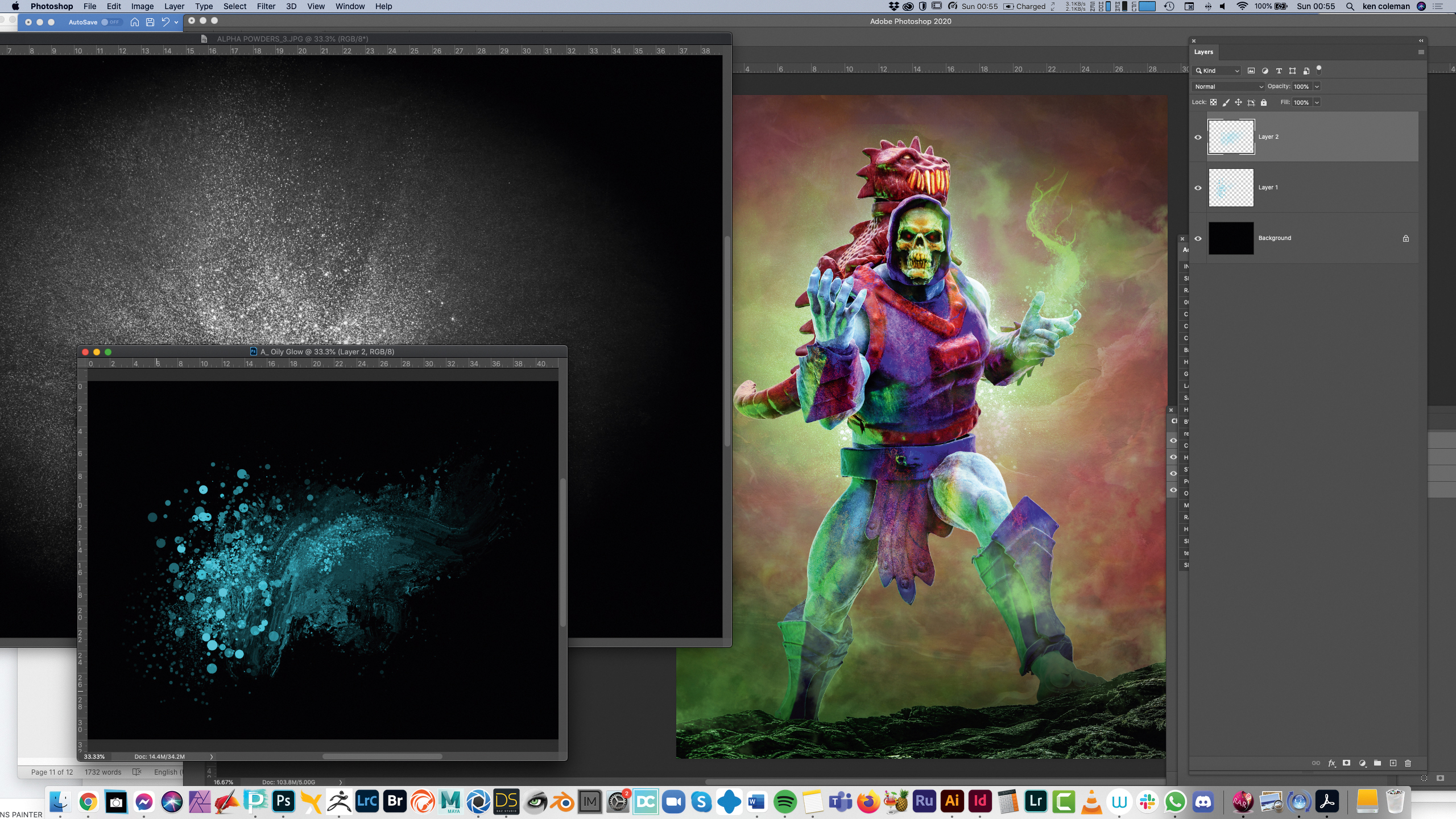
(Image: © Ken Coleman)
I create my own particles by taking a photo of baby powder on disastrous craft paper, as well atomic number 3 creating particles with Painter's Particle brushes. I add these elements by placing them in the scene and setting the Commingle modal value to Screen. I also create gradients of leafy vegetable by selecting the colour from the glows on the 3D figure's trunk. Exploitation the Slope tool and cloud brushes I create directive lit that matches the model.
12. Final preparation before paint-over
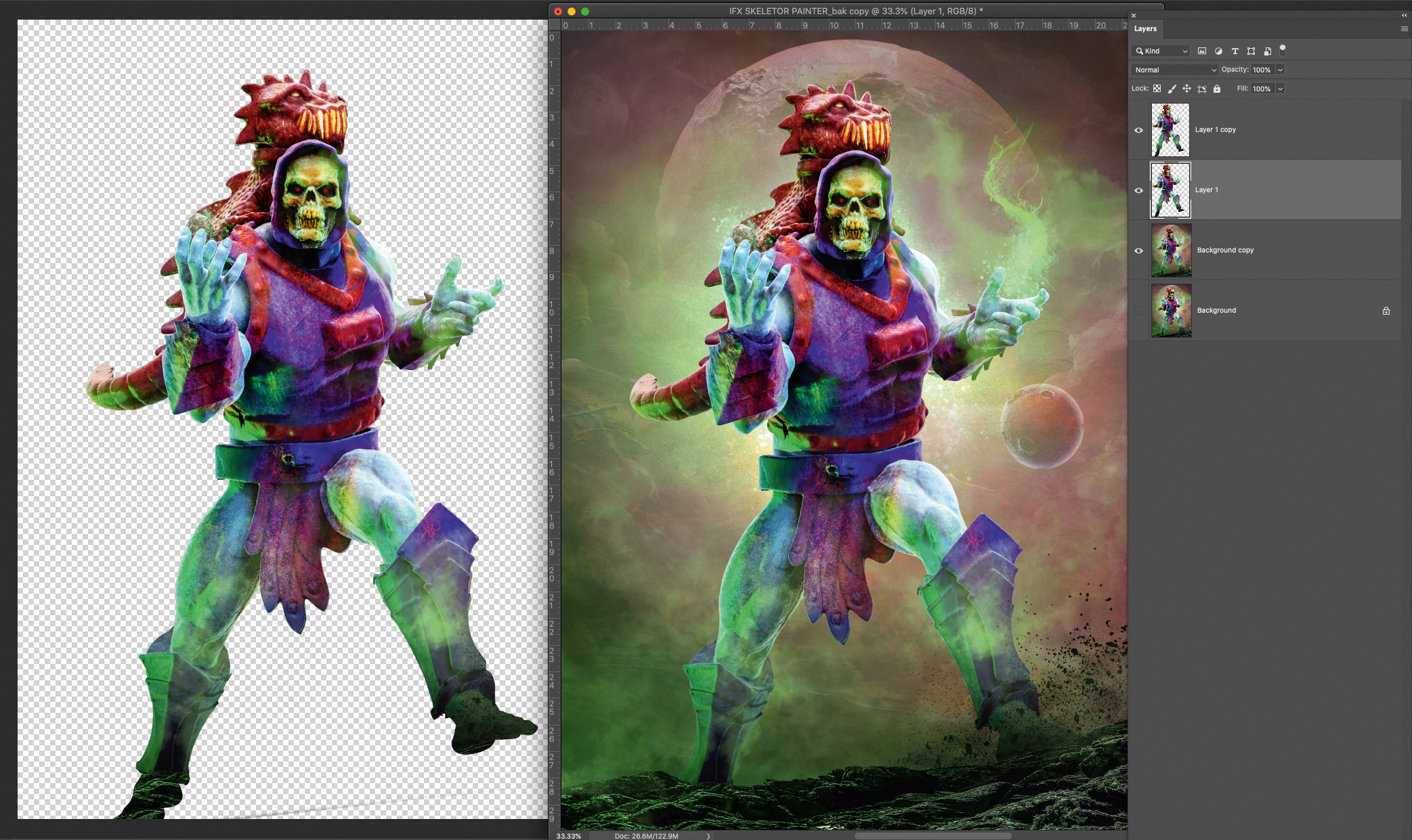
(Image: © Ken Coleman)
Before bringing the composition into Painter for a paint-over, I click Image> Reduplicate to produce a copy of the file. I choice the figure's outline, then flatten the look-alike and copy and paste just the figure over itself. I now have options to usance Blender brushes on the figure and background on an individual basi in Painter. Victimisation large oil brushes for the backdrop and more refined fractal brushes for the struggle gives a nice sentiency of depth.
13. Breaking in the lead the epitome in Corel Painter
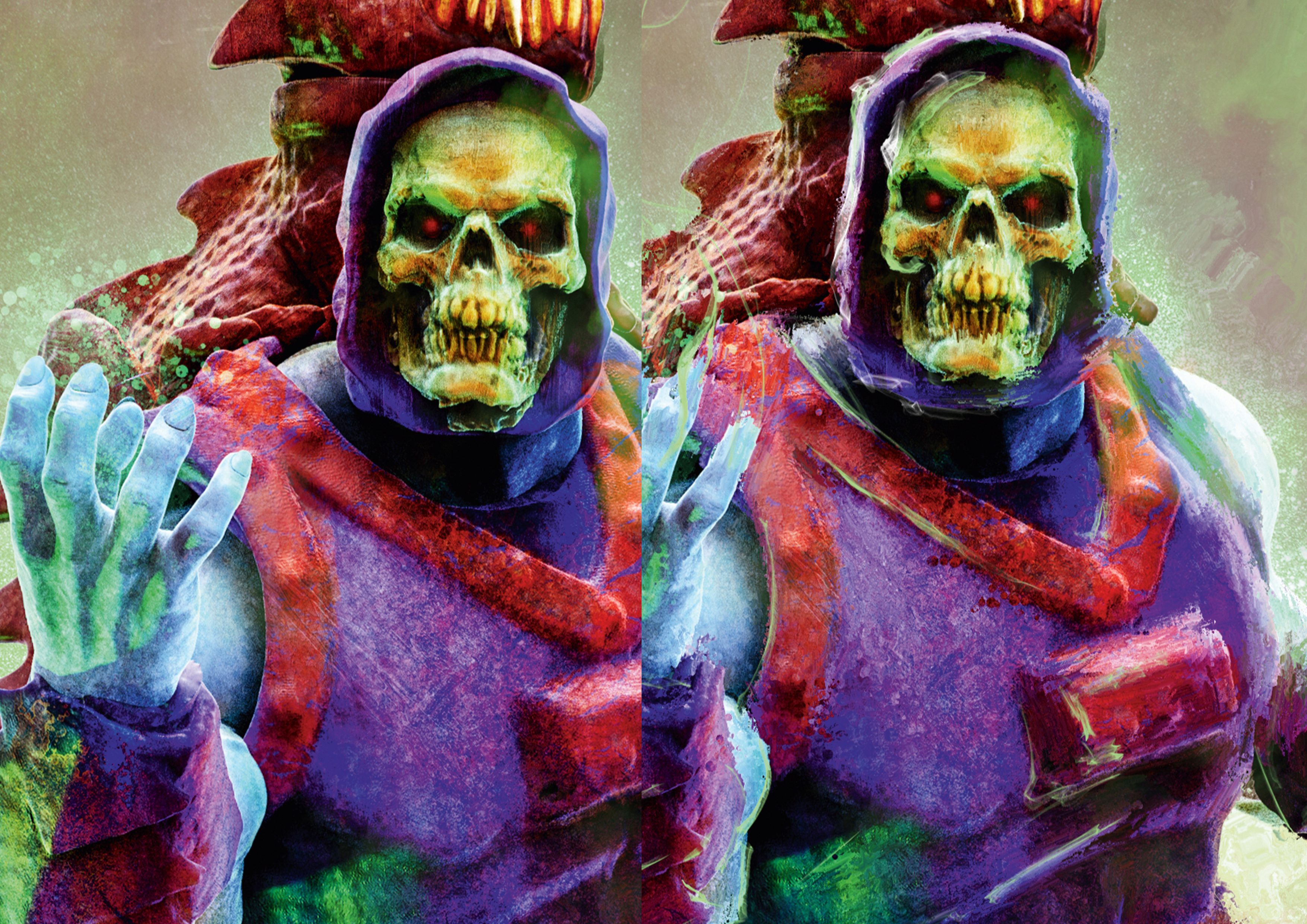
(Image: © Ken Coleman)
You can save the register to the cloud so you can open it on an iPad and utilisation blender and fine art brushes in an art app much A Procreate or Fresco. However, I choose to role Painter on the desktop. I utilise a limited number of Brushes on the merged layers. My favourites are Stencil Oily Liquidizer and Fractal Blender. I also place whatsoever white or brightly coloured, cut foreground lines on a new layer with the Spring Construct Creature brush. Shown Hera: the before and after versions in Painter.
14. Finishing the art in Photoshop
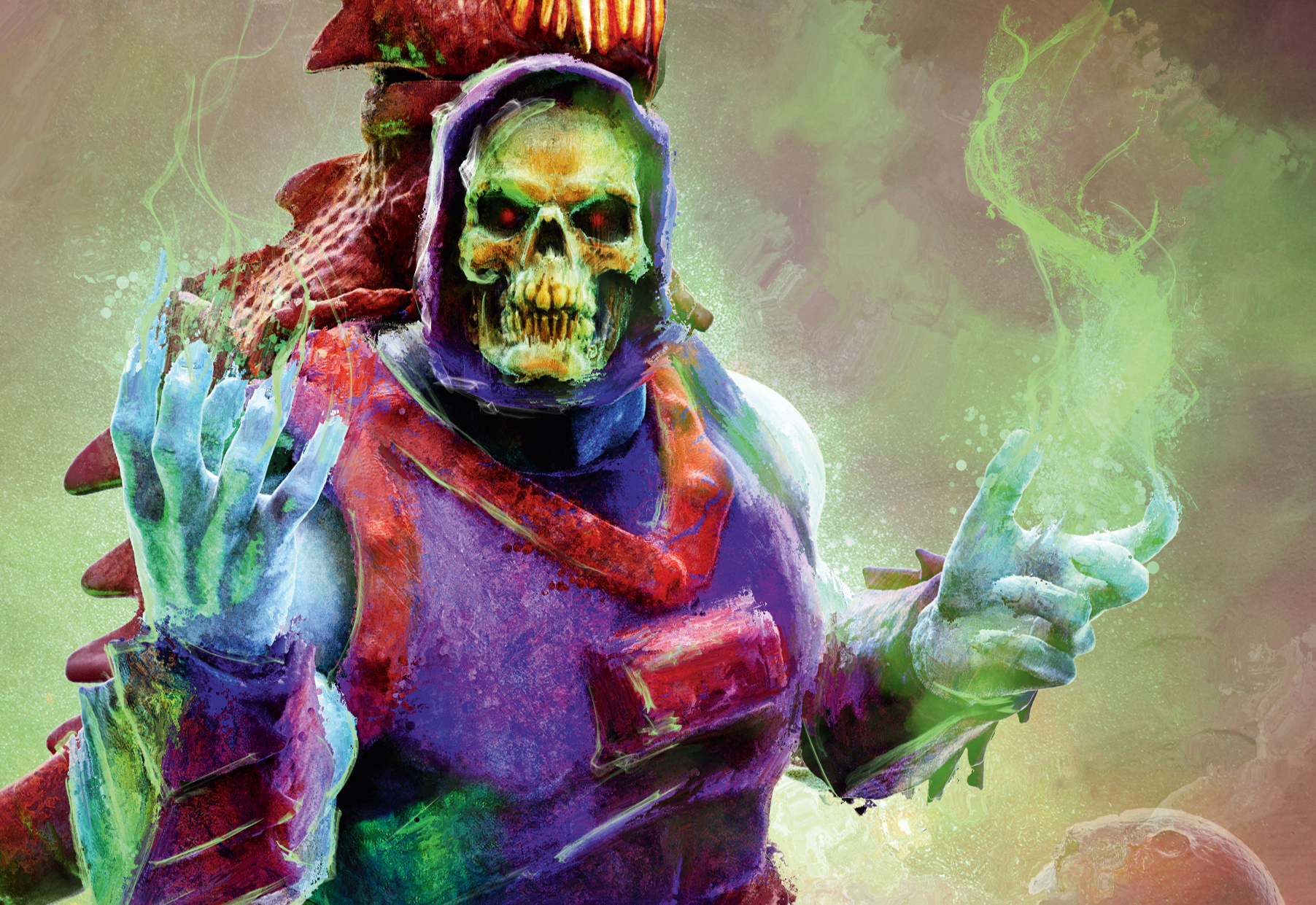
(Image: © Cognizance Coleman)
I reopen the image in Photoshop and set the highlights to a Flabby Light blend mode. I besides experiment with the Opaqueness of the painted layers and sometimes mask off areas where I English hawthorn deliver gone overboard with Painter. The mind is to proportionality the abstract light touch work with the detail and silhouette of the final picture. Sometimes I fuse and replicate everything on one and only final exam layer and use an Unsharp cloak set at 200 per cent at 0.2 pixels for lucidity. Ultimately, my 3D scanner is costly, just try experimenting with smartphone apps such as Bellus3D and LIDAR 3D to create 3D models of everyday objects to use in your artwork.
Never miss an put out of ImagineFX
If you liked this tack, you'll love ImagineFX. The world's ducky digital art magazine is on sale in the UK, European Economic Community, United States, Canada, Australia and more. Limited numbers of ImagineFX print editions are available for delivery to over 120 countries from our online store (the shipping costs are enclosed in all prices).
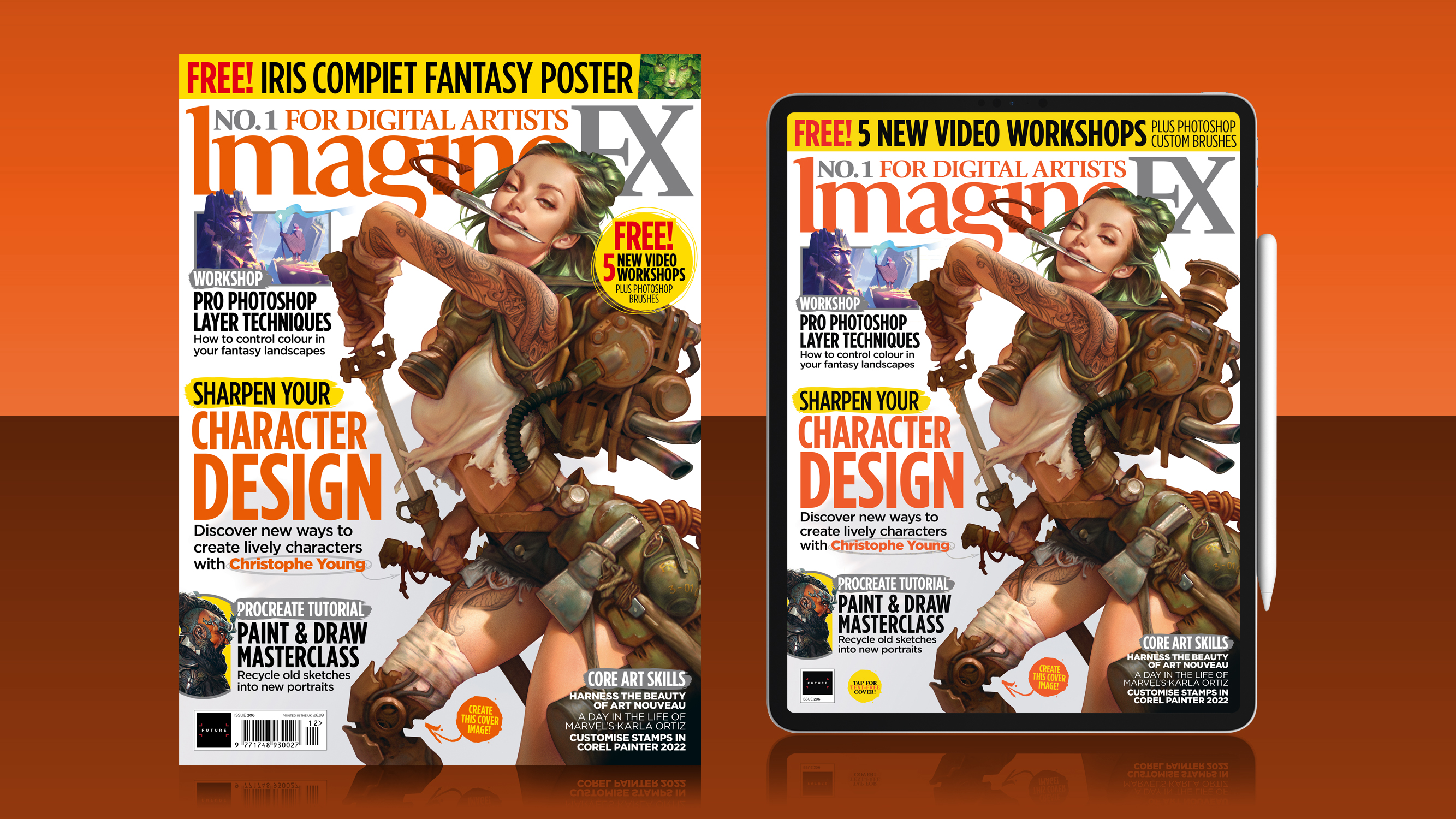
Read more:
- Find the best 3D software for 2022
- Quickly memorise Corel Painter 2022's new brushes
- The incredible Wacom tablet that's also a 3D scanner
Source: https://www.creativebloq.com/how-to/create-vintage-art
Posted by: danieltrum1952.blogspot.com

0 Response to "How to create vintage art from He-Man 3D scans - danieltrum1952"
Post a Comment